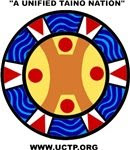Did You Know: The Taíno were well-renowned for their observance of a culture of peace, yet they did not willingly succumb to Spanish colonization. In fact, not long after Columbus’s arrival, Taino people on the island of Bohio (now Haiti/Dominican Republic) successfully revolted against the first Spanish attempts to conquer their ancient island homeland. This Taino offensive against the Spanish invaders was carried out as early as in 1492 with the destruction of the Fort Navidad following Columbus’ return to Spain. Upon his return to the fort, Columbus learned that the Taino had killed all his men in a swift military operation led by Kaonabo (Caonabo), a chieftain or Kasike of Maguana, an indigenous territory near the center of the island. The rape of Taino women by the Spanish colonizers was among the main reasons the Taino turned to hostility. Kaonabo led a resistance against the Spaniards until he was finally captured in 1494 and imprisoned. Following Kaonabo's imprisonment, his brother Manikateh mounted an unsuccessful attempt to free him and was also imprisoned. According to Spanish sources, Kaonabo is said to have perished at sea while on route to face the Spanish Crown in 1496. - UCTP Taino News (c) 2007
Tuesday, January 09, 2007
Friday, January 05, 2007
Being Called Indian...

Did
You Know - The
Taíno were the first Indigenous Peoples of the Western Hemisphere to be called
“Indians”. According to historic sources the misnomer was applied by
Christopher Columbus on his first trip to the Caribbean in 1492. This was the
beginning of a legacy of “first” for this Caribbean Indigenous First Nation.The
word "Taíno" means "good people" in the Taíno language
(Tai = good and "no" = is a plural suffix used in this case to mean 'people').– UCTP
Taino News © 2007
Subscribe to:
Comments (Atom)






